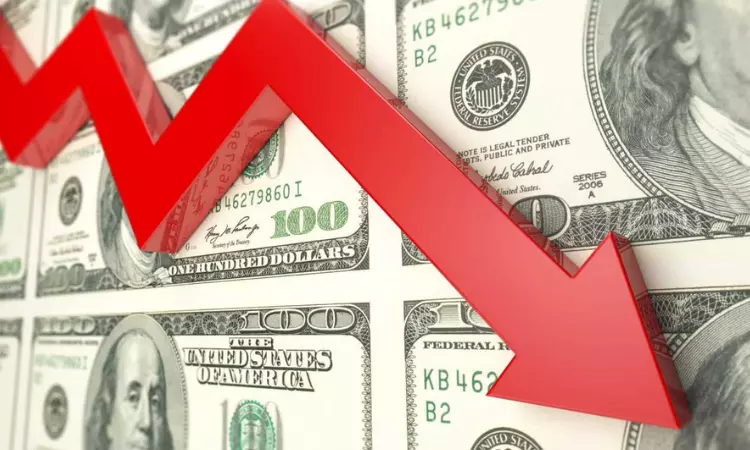With reports of foreign funds flowing into domestic assets and the prospect of a Selic hike around 12%, the spot dollar retreated against the vast majority in domestic FX markets in Monday’s session, despite a stronger dollar, strong and emerging currencies. Apart from a small increase in the first hour of trading, when it hit the day’s high (5.2665 reais), the currency traded lower throughout the session, falling below the 5.20 reais line at various points – which is a technical barrier that traders said, if breached at the close, could open a window for another round of real appreciation.
Amid mixed reports about Russia’s impending invasion of Ukraine, today’s asset direction was heavily influenced by the ups and downs of expectations for the unfolding geopolitical crisis. Signs of Russia’s willingness to negotiate with Western powers in the late morning and early afternoon gave the New York Stock Exchange some relief and eased pressure on dollars abroad. Russian Foreign Minister Sergey Lavrov even said that a diplomatic exit was still possible. It was then that the currency made its lowest value here, falling to 5.1957 reais (-0.89%).
Here, the dollar slowed significantly, closing at 5.2185 reais, down 0.46%, after running at 5.22 reais for a while. The currency is already down 6.41% in 2022, after falling 1.65% in February. Among real currency pairs, the South African rand and the Mexican peso also rose against the dollar, but underperformed. currency. After the deal closed, a senior Ukrainian government official reported that Zelensky was being ironic in his reference to Wednesday’s Russian attack.
Traders again reported foreign inflows into domestic assets, citing high interest rates in Brazil as the main reason for the appreciation of the real. In addition to attracting short-term funds for carry trade operations, domestic interest rates make hedging more expensive and discourage long positions (bets on the appreciation of the dollar).
Last week, following the Copom minutes and a blunt statement by the Central Bank's monetary policy director, Bruno Serra, the Focus Bulletin's median projection for the Selic rate by the end of the year rose from 11.75% to 12.25% – reflecting the latest push to revisions of expectations in recent days.
“Despite all the uncertainty over the Ukraine issue and the rise in U.S. Treasuries, the flow of funds is still very strong. Spreads are wide. The problem is that the funds are short-term and can leave at any time,” said Hideaki Iha, a trader at Feira Corretora, adding that exporters and importers are maintaining a cautious stance and avoiding large trades. “The dollar has fallen sharply and visibility is very low now. If Russia invades Ukraine, the dollar could rise.”
Iha noted that the strong inflow of foreign currency has finally eased the transmission of fiscal concerns into exchange rate formation. While there appears to be some backtracking on the proposed fuel PEC in the Senate, Iha sees this as a new wave of pressure to increase public spending or fiscal relief in an election year. “The external picture is complicated. The US will raise interest rates. Internally, our economy will be very weak and spending will increase. It is hard to imagine the dollar falling much,” he said.
The Senate is expected to vote on three bills to try to lower fuel prices in the country next Wednesday, the 16th, but the PEC by Senator Carlos Fávaro (PSD-MT), nicknamed the “kamikaze PEC” in economic circles, still does not have a suitable date.
For now, the possibility of a faster normalization of US monetary policy, as well as the possibility of consecutive rate hikes starting in March, will not affect the real. The main representative of the US central bank's hardliners, St. Louis Federal Reserve President James Bullard, has once again called for raising the key rate by 100 basis points by July 1. According to the leader, the Fed's balance sheet shrinkage – which, in fact, means withdrawing money from the system – should begin as early as the second quarter. China Mobile Group's monitoring shows that Fed officials will once again lead the way in raising interest rates by 50 basis points in March.
Eduardo Velho, chief economist at JF Trust, believes that “still significant” foreign flows into local assets are responsible for the “continued disengagement of foreign exchange markets” from the dollar’s behavior abroad. “The carry trade continues to benefit the real against the dollar and rates should rise in the near term,” Velho said, noting that the dollar is rising abroad due to the geopolitical crisis and the possibility of higher rates, the Fed said.
See also other articles:
Discover how to enjoy your vacation on a budget.
Minimalism: what is it and how to achieve financial independence through it?

